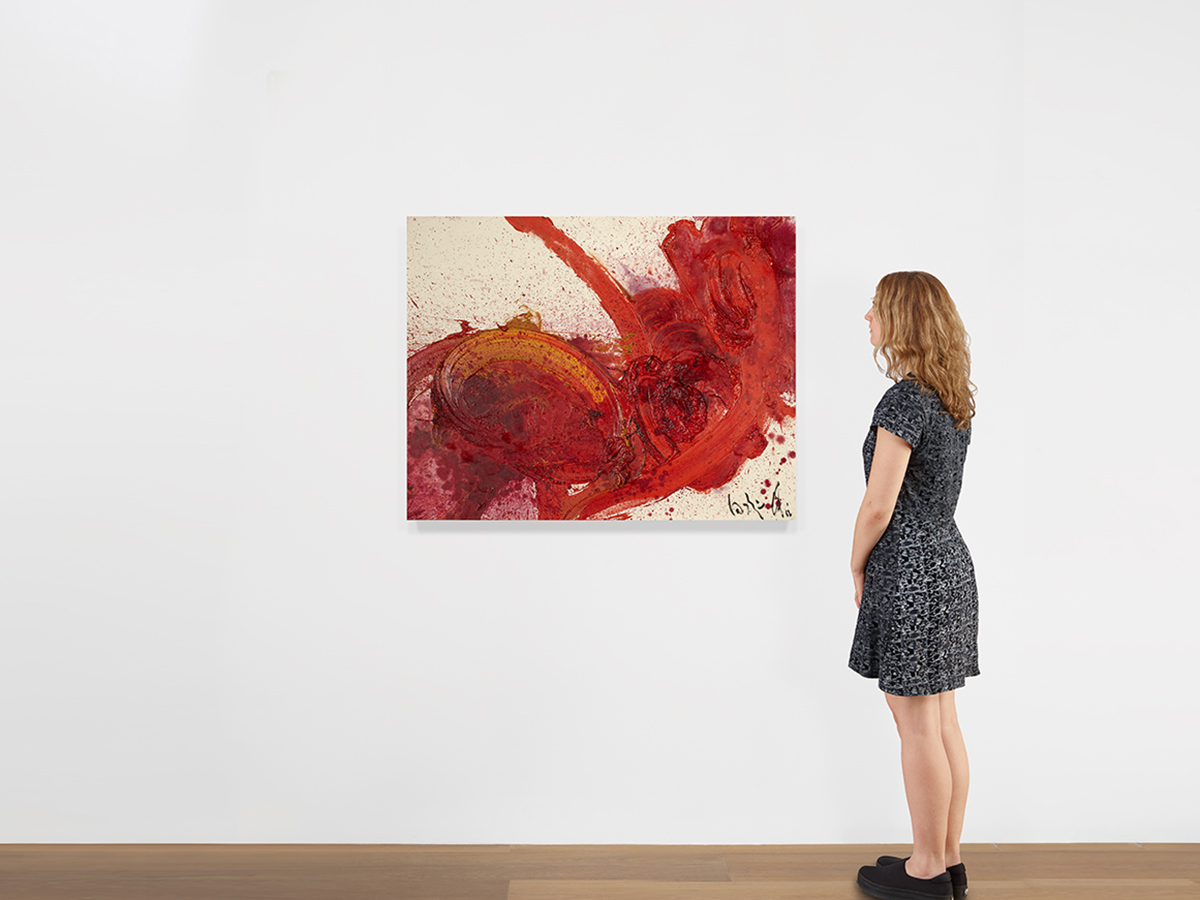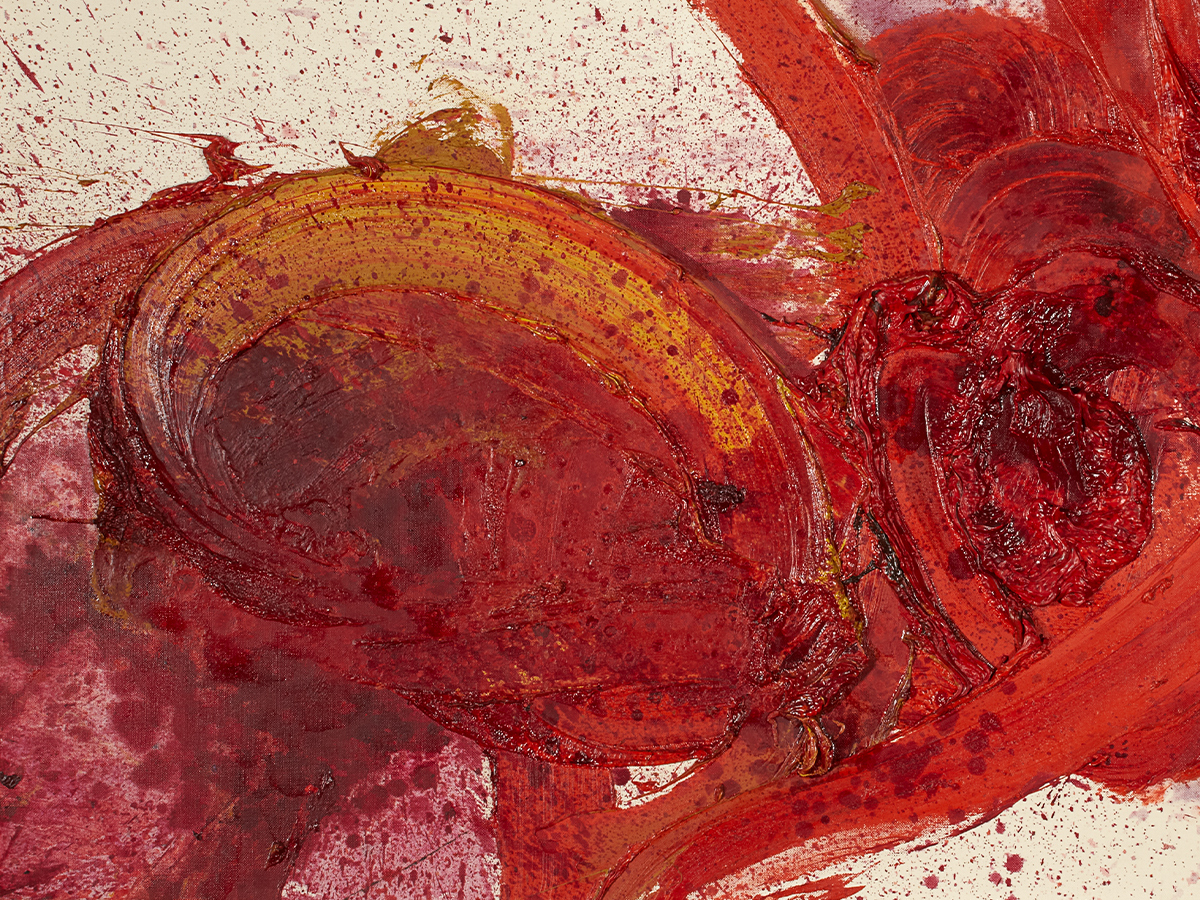Kazuo Shiraga
Untitled, 1962
Oil on canvas
35 x 45 5/8 inches (89 x 116 cm)
© The Estate of Kazuo Shiraga
I want to paint as though [I am] rushing around a battlefield, exerting myself to collapse from exhaustion. —Kazuo Shiraga
To execute paintings such as Untitled (1962), Kazuo Shiraga would suspend himself from the ceiling with a rope, and then use his feet to spread paint across canvas. In 1955, the artist had joined the Japanese postwar avant-garde Gutai group, whose members investigated new forms through action, painting, and performance. Shozo Shimamoto, one of the group’s earliest members, stated, “paint can only be revived after brushes have been thrown out.” In performances such as Challenging Mud (1955), Shiraga physically wrestled with a metric ton of clay that had been deposited in the courtyard of Tokyo’s Ohara Kaikan during the First Gutai Exhibition, which opened that same year. The inception of his foot paintings precede Challenging Mud, and while he continued to paint, Shiraga’s ephemeral performances are illuminated by the Gutai philosophy, which asserted that the act of painting could occur beyond the confines of the canvas and the studio.
In 1957, the French art critic Michel Tapieì, who coined the term art informel, expressed a profound interest in the Gutai group. Through Tapieì’s relationship with Gutai, the group became internationally renowned. The critic’s influence also prompted major conceptual changes in the organization and artistic production of the group. Tapieì requested that Shiraga send him twelve “foot paintings” to be exhibited in Europe. He advised that Shiraga create large-scale paintings, prompting a series of works ranging from 63 x 41 inches to 102 x 76 inches. The artist intentionally left his works untitled during the late 1950s and early ’60s, insisting that “the title of the work hinders viewers from perceiving the visual sensibility the work presents; in fact, it destroys that perception.” Untitled was made the same year as the artist’s first European solo exhibition in 1962 at Galerie Stadler in Paris.
In Untitled one can observe Shiraga’s steadfast hold onto the original principles for painting that he had developed upon joining Gutai: to paint on smaller canvases so that the action and energy of his foot-strokes extend beyond the limits of the material support. In this way, Untitled is pure energy and embodied force, and a primary example of the violent meeting between body and matter that Shiraga dedicated his life to exploring.


